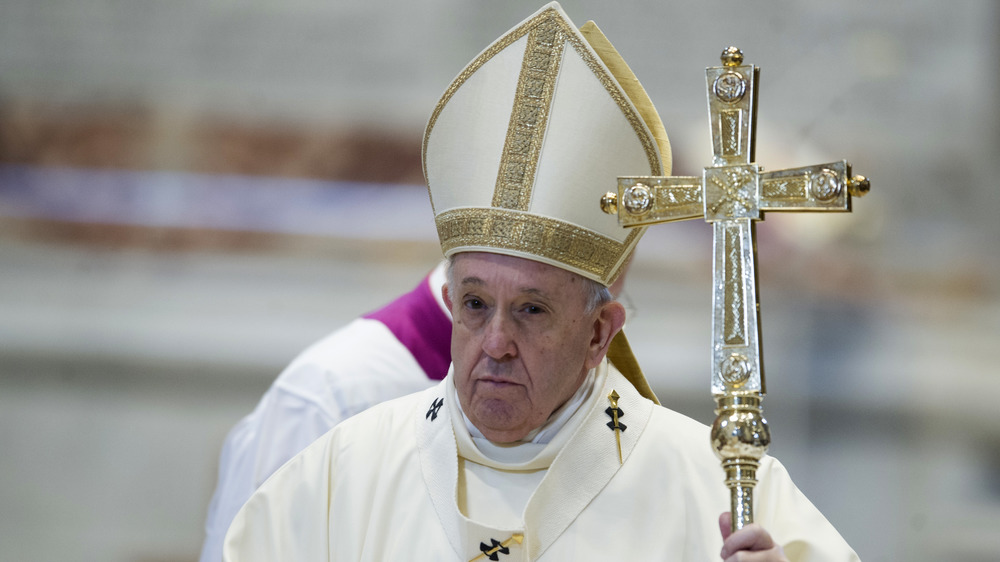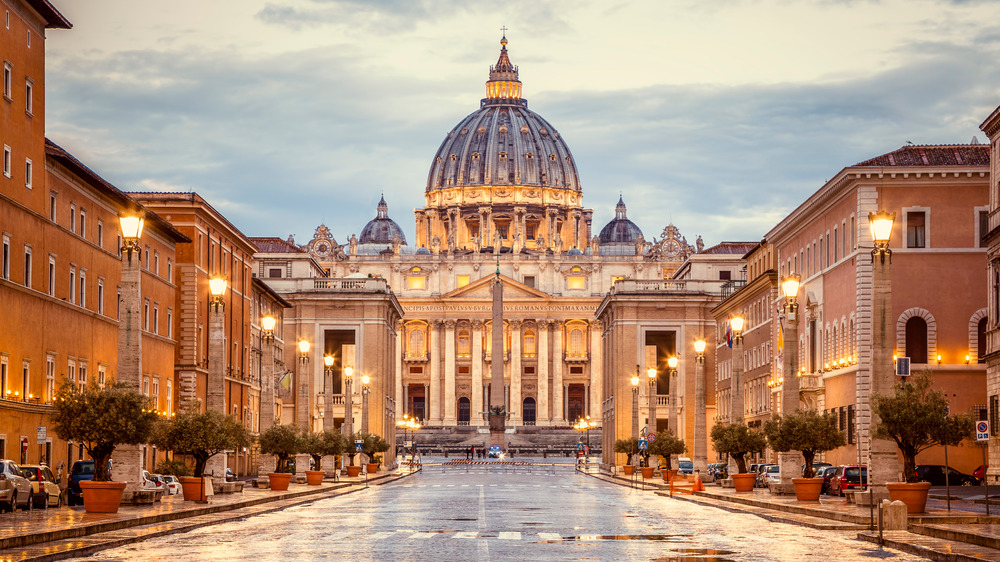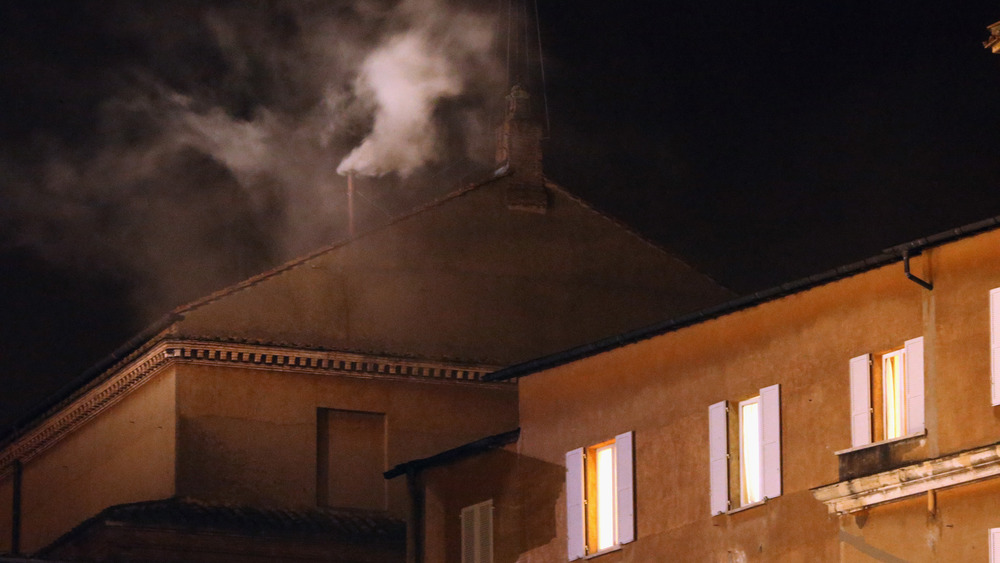This Is How New Popes Are Chosen
It may be a process that is done in secrecy, but the methods of selecting a pope, the leader of the Catholic Church, are no mystery — not anymore, anyway. Over the course of centuries, the procedures for electing a pope have been refined and made transparent, even if the general public isn't privy to all the details every step of the way. Technically, any Roman Catholic male can be elected to the papacy, reports CNN. Since 1379, however, every pope has been a member of the College of Cardinals — the church's most senior officials, and the very body casting the votes. The cardinals are often bishops and archbishops, who have been appointed by the pope to serve the church around the world and at the Vatican.
Most popes die while in office. But when Pope Benedict XVI resigned in 2013, it was the first papal resignation since 1415, when Gregory XII stepped down. Under those circumstances, Canon (Church) Law dictates that, "[I]t is required for validity that the resignation is made freely and properly manifested but not that it is accepted by anyone," according to the Vatican's web site. In either set of circumstances, what comes next is the same: Every cardinal under the age of 80, who can reasonably do so, travels to Rome to participate in the election of the next pope.
What is a conclave?
Once all of the cardinals have arrived, the electoral process, called a conclave, begins. A maximum of 120 cardinals electors are allowed to take part in the selection process. It commences with a special morning Mass in St. Peter's Basilica (pictured above), and, in the afternoon, the cardinals walk in procession to the Sistine Chapel to start the voting process. During the conclave, cardinals reside within the Vatican, and are forbidden to have any contact with the outside world. A security company even sweeps the grounds for any bugs or surveillance equipment to ensure the privacy of the cardinals while they discuss, in great detail, the merits of the likely candidates, per Reuters. If any cardinal is caught discussing the proceedings with anyone outside the chamber, they risk excommunication.
Inside the Sistine Chapel, paper ballots are passed out to each cardinal. At the top are the words "Eligio in Summum Pontificem" — Latin for "I elect as supreme pontiff." The cardinal electors write the name of their candidate below (and they cannot vote for themselves). Once all the cardinals have completed their ballots, they walk to an altar in order of seniority and place their folded ballots into a chalice, according to BBC. The votes are then tallied and the results are read to the cardinals.
Black smoke, nope; white smoke, pope
If a candidate has received two-thirds of the vote, he becomes the new pope. If no confirmation is made, more rounds of voting are required — as many as four a day, until the two-thirds threshold is reached. In previous centuries, conclaves have gone on for weeks or months, and some cardinals have even died during the process. Now, breaks are instituted after five days, and then the process begins again.
Voting results are communicated twice a day — once after morning votes and again following afternoon voting — by literal smoke signals coming from the Sistine Chapel's chimney (pictured above). If a pope hasn't been elected by two-thirds vote, the ballots will be burned along with a chemical that makes the smoke black, according to The Washington Post. If the smoke is white, it means Catholics around the world have a new pope.
Typically, within an hour after the white smoke appears, the new pope is revealed on the balcony overlooking St. Peter's Square with the words, "Habemus Papam" — Latin for "We have a pope." The new pope is then introduced by his chosen papal name. He speaks briefly and offers a prayer, and the newly-elected pope's coronation takes place just days after his election.


